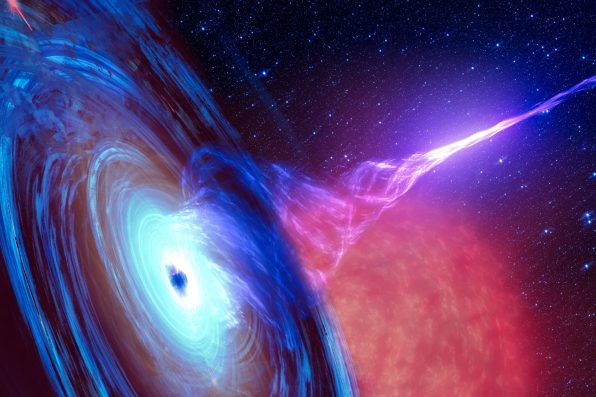Astronomers have witnessed a supermassive black hole in the early universe that is starving its galaxy to death.
The observation was made through the James Webb Space Telescope (JWST). The galactic death appears to have progressed quickly due to winds of gas blowing at two million miles per hour.
A galaxy is considered dead when its star formation is cut off. This can happen if the dense clouds of gas and dust, which are the foundation of stars, are exhausted.
For a long time, scientists have thought that galaxies can be “killed” prematurely when their central supermassive black holes expel gas and dust from them.
The JWST observations are the first solid pieces of evidence that confirm how star formation is prevented by galaxies being starved.
A team of researchers came to this conclusion after studying the early galaxy named “Pablo’s Galaxy.” It is officially known as GS-10578.
Pablo’s galaxy is named after the team member who suggested that it should be observed in detail. It is located around 11.5 billion light years away.
“Based on earlier observations, we knew this galaxy was in a quenched state: it’s not forming many stars given its size, and we expect there is a link between the black hole and the end of star formation,” said Francesco D’Eugenio, a team member from the Kavli Institute for Cosmology at the University of Cambridge.
“However, until the JWST, we haven’t been able to study this galaxy in enough detail to confirm that link, and we haven’t known whether this quenched state is temporary or permanent.”

Sign up for Chip Chick’s newsletter and get stories like this delivered to your inbox.


